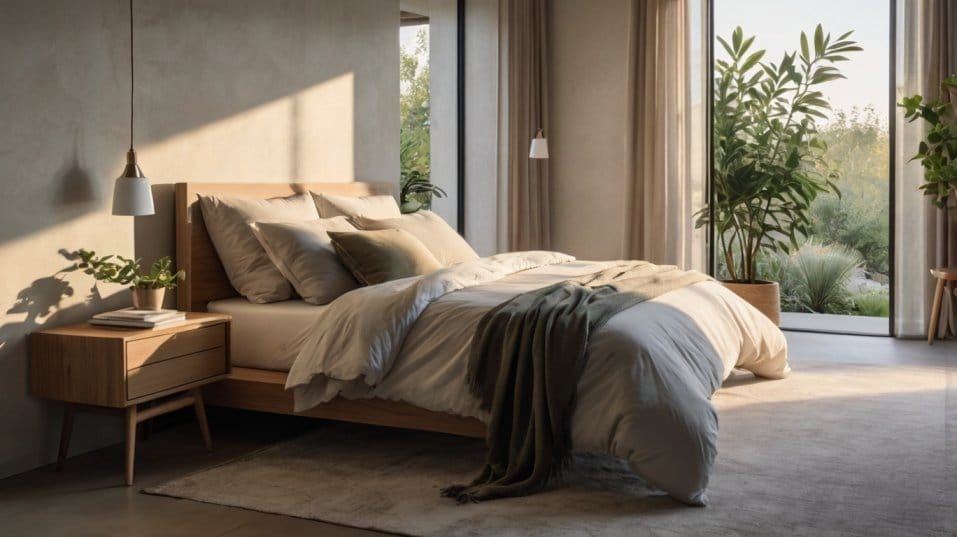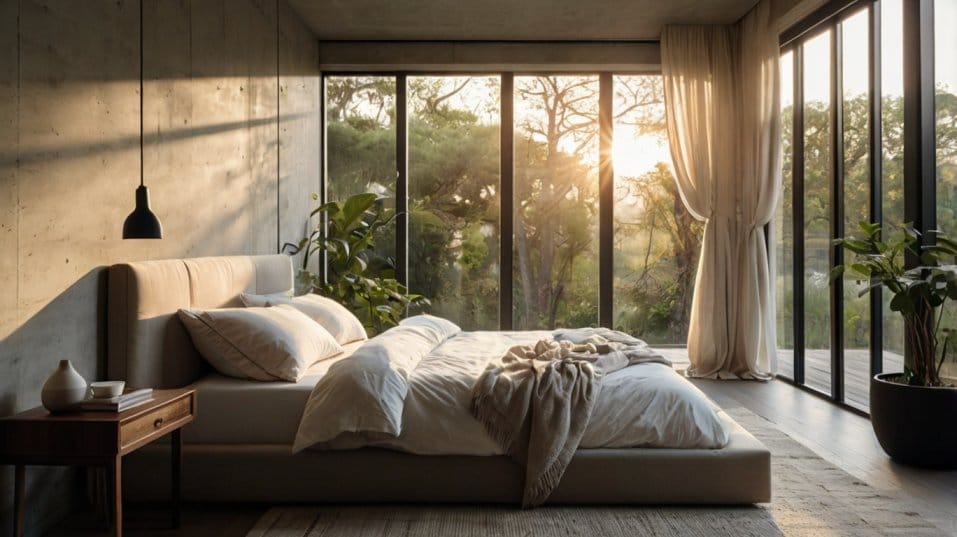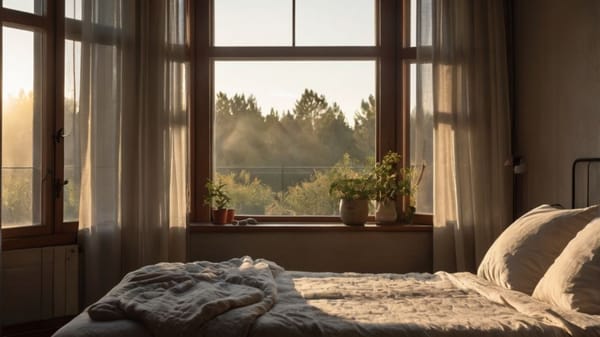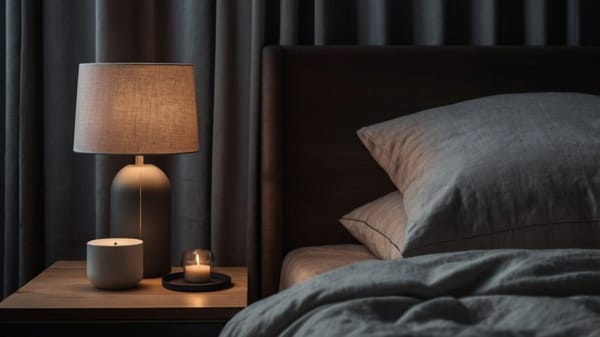Sleep Tech vs. Simple Habits: What Matters More?
Struggling with sleep? Discover why simple science-backed habits outperform expensive tech—and how to start sleeping better tonight.

Are you relying on gadgets to fix your sleep—but still waking up groggy? You're not alone. Sleep tech looks impressive, but it often masks a simple truth: no device can replace the power of consistent habits.
If you want real change—better energy, faster recovery, clearer thinking—it starts with the basics. Let’s unpack what actually works, and why mastering your routine beats managing sleep scores.
Why Sleep Tech Feels Like the Answer
Sleep gadgets promise a lot. They give you data: REM cycles, heart rate variability, even temperature trends. For beginners, this feels like control.
You can measure things. You can “optimize.” But if you're not sleeping well, tracking it won't fix the problem. A graph doesn’t get you to sleep faster—it just tells you how bad it was.
There’s value in awareness. Seeing your sleep patterns can highlight problems you didn’t notice, like how late-night Netflix wrecks your deep sleep.
For example, if your wearable shows a pattern of frequent wakeups after heavy meals or alcohol, that’s real insight. But tech is just a mirror. What matters more is what you do in front of that mirror.

There’s also a downside to over-tracking: sleep anxiety. It’s a real phenomenon. People start obsessing over numbers and forget how they feel.
If you wake up energized, that’s what matters—not whether your device scored your sleep a 74. And when that anxiety kicks in, it becomes a self-fulfilling cycle: you worry about sleep, then sleep worse, then worry more.
Tech is seductive because it feels proactive. But it can trick you into thinking you’re fixing sleep by managing spreadsheets. Insight is only useful if it drives action. The best use of sleep tech is to support habit-building, not substitute for it.
What Actually Moves the Needle
This is where simple habits crush gadgets: they change the input, not just the output. Better habits improve your sleep directly, without the middleman of tech. And the changes are easier to make than you might think.
Start with Consistent Wake Times
Start with your wake time, not your bedtime. Waking up at the same time every day—yes, even weekends—locks in your circadian rhythm. It creates a natural rise and fall in your body temperature, hormone levels, and alertness.
That rhythm is what makes you feel sleepy at night without effort. Irregular wake times, on the other hand, confuse your internal clock and delay your body's melatonin release.
Get Natural Light Exposure
Light is another massive factor. Your brain’s internal clock runs slightly longer than 24 hours. Morning sunlight resets it. Just 10 to 15 minutes of direct light within an hour of waking sends a clear signal: it’s daytime, be alert.
That anchors your cycle, making it easier to fall asleep at night. And no, your ceiling light doesn’t count—get outside or near a bright window.
Build a Reliable Wind-Down Routine
Evening habits matter, too. Think of your brain like a dimmer switch, not a light you can flip on or off. The more consistent your wind-down routine, the easier it is for your nervous system to shift into rest mode.
You don’t need a perfect routine—just a predictable one. Lower the lights. Cut off screens. Read something low-stakes. Stretch. Sip herbal tea. Whatever signals "off-duty" to your brain.
Avoid high-stimulation activities close to bedtime. That includes doomscrolling, intense arguments, and certain late-night workouts. Your brain can’t just jump from high alert to deep rest without transition.
Regulate Your Sleep Temperature
Temperature also plays a role. Your body cools slightly before sleep. You can support that by taking a warm shower or bath about 90 minutes before bed, which causes your core temperature to drop afterward—a cue that it's time to sleep.
Keep your bedroom cool, ideally between 60–67°F (16–19°C). And avoid piling on heavy blankets that trap heat.
Stay Active and Eat Smart
Then there’s movement. Not intense exercise right before bed, but consistent daily physical activity. Walking, strength training, cycling—it all builds up sleep pressure.
That’s the natural drive to sleep that builds the longer you’re awake. The more you move, the more your body craves deep, restorative rest.
Nutrition also matters. Try to finish eating at least 2–3 hours before bed. Digestion can disrupt deep sleep, especially with heavy, spicy, or sugary foods.
Hydrate during the day, but taper off in the evening to minimize wakeups. Adding foods rich in magnesium and tryptophan—like bananas, almonds, or turkey—can support natural sleep chemistry.
Design a Sleep-Optimized Environment
Your sleep environment counts, too. Make your room a sleep sanctuary. Remove clutter. Block outside noise. Keep lights low. Make your bed inviting. Small shifts in your space can reinforce your brain’s association between the room and rest.
Where Sleep Tech Can Help (If You Use It Right)
Let’s be clear: some tech can support your sleep. If you treat it like a coach, not a judge, it can guide better habits.
Wearables are good for spotting trends. Maybe your HRV drops after drinking wine, or your deep sleep tanks after intense evening workouts.
Now you have a pattern you can act on. But never let the data override your lived experience. If you feel sharp and focused, that’s your real metric.
Other tech can help in more practical ways. Blackout curtains that open on a timer. Smart lights that dim in the evening. A white noise machine that blocks out barking dogs or traffic.
These are tools that work with your biology. They create the conditions for good sleep without needing your constant attention.
Blue light blocking glasses can also be helpful if evening screen time is unavoidable. They reduce the suppressive effects of artificial light on melatonin, your body’s natural sleep hormone.
And don’t underestimate environmental tech: cooling mattress pads, breathable bedding, and air purifiers can all boost sleep quality by supporting the body's natural temperature and breathing rhythms.
There’s also emerging tech focused on brainwave entrainment, like audio tones or gentle vibrations synced to natural sleep frequencies.
While the science is still evolving, some people report faster sleep onset using these tools. Use with curiosity—not dependence.
Just don’t fall for the trap of thinking that more tech means more progress. If you’re constantly tweaking apps and comparing last week’s sleep score to this week’s, you’re burning energy that could go toward simply resting.
Use technology to reinforce your sleep-supporting choices—not distract you from them.
Final Thoughts
Here’s the bottom line: your sleep is built on behavior, not biohacks. Tech might give you insight, but habits give you results. Wake up at the same time every day. Get outside in the morning.
Create a wind-down cue your brain can rely on. Move your body. Keep your room dark and cool. Time your meals. Shape your space. Use tools to support the basics, not replace them.
You don’t need to overthink it—you just need to begin. Start tonight. Pick one habit. Commit to it for a week. Stack another one next week. Better sleep isn’t a mystery. It’s a system. One you can build, step by step, starting now.




